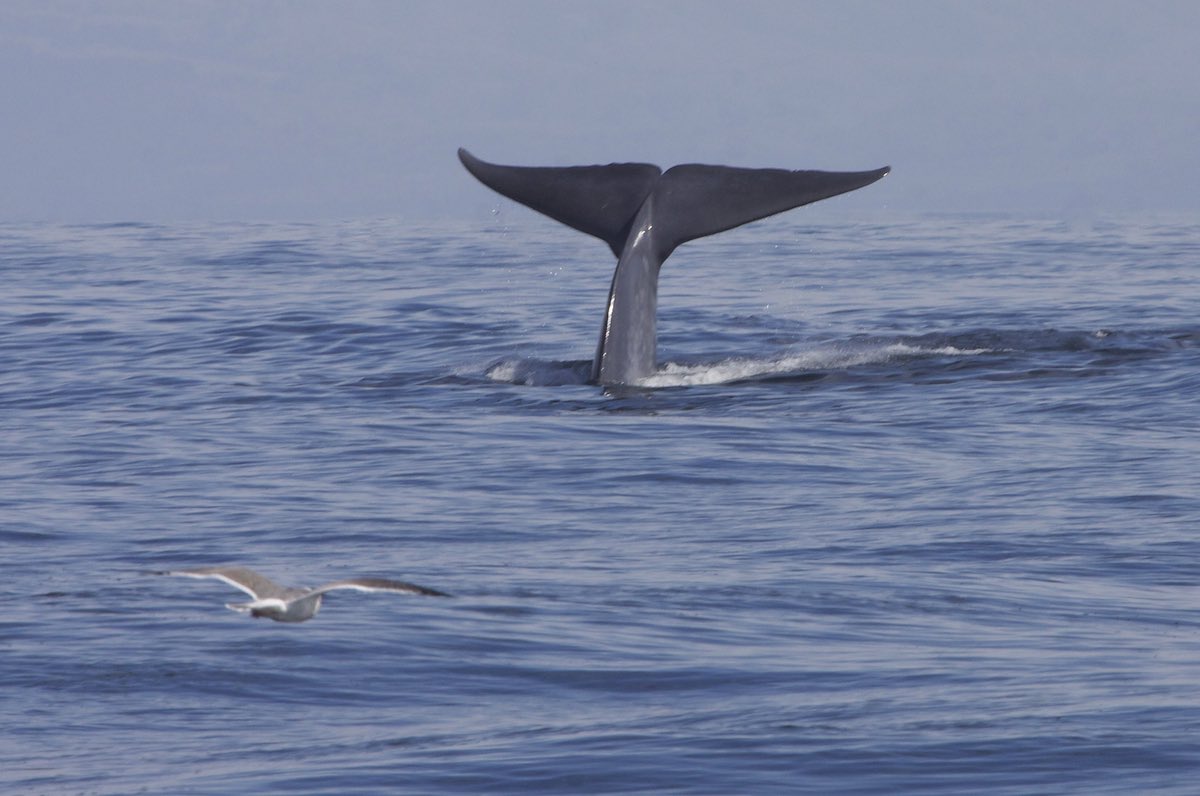4 Things to Know About Blue Whales
Published by Ocean Conservancy
There’s a reason why people are infatuated by whales. These massive marine mammals are deep divers, graceful swimmers and majestic jumpers—what’s not to love? Although all whales deserve to be celebrated, there is one that stands out among the rest (with its size, anyway). Today, we’re diving into what makes the blue whale one of the coolest whales in the sea. Read on for four things to know about blue whales!
Blue whales are the biggest animals that have ever lived.
Calling a blue whale “big” is an understatement. They are positively massive. An adult female can grow to 100 feet long—about the length of a Boeing 737. Blue whales can weigh up to 200 tons (400,000 pounds)! That’s 30 times heavier than an African elephant. In fact, just their tongue can weigh as much as an elephant.
Blue whales aren’t just the biggest animals alive in the ocean. They’re not just the biggest animals alive in the world. They are the biggest animals that have ever lived (that we know of, at least). Even the largest dinosaur can’t compare—the Argentinosaurus clocked in at about 220,000 pounds.
Blue whales eat tiny prey.
Blue whales are baleen whales, meaning they have long plates of baleen they use to filter food out of the water. Baleen looks like long, tightly-packed brush bristles, and is made of keratin, which is the same substance that makes up your hair and fingernails. To feed, blue whales strain ocean water through their mouths, trapping their prey in the baleen. The whales then push remaining seawater out of their mouths, leaving behind tiny animals.
For such a big animal, blue whale’s preferred cuisine is surprising. They eat massive amounts of krill: small, shrimp-like crustaceans that are only about 2.5 inches long. Blue whales can eat up to 4 tons of krill a day—that’s 4 times more food that you, a human, will eat in an entire year! Blue whales aren’t the only animals with a taste for krill, either—seals, birds, penguins and other whales also love these tiny crustaceans.


Blue whales are loud.
Whales rely on sound to communicate with their fellow whales. Depending on the species, whales can use a series of clicks, groans and grunts to communicate. Blue whales in particular are some of the loudest of all whales—it’s thought that their vocalizations can be heard by other blue whales up to 1,000 miles away. That’s like someone in New York City shouting to someone in Tampa, Florida (but remember, sound travels much faster through water than through air). They’re not the loudest whales in the sea, however: the sperm whale’s calls can reach 230 decibels. In contrast, blue whales can only reach 188 decibels (which, to be fair, is still louder than a jet engine at takeoff).
Blue whales are endangered—and need your help.
Like many whale populations in our ocean, blue whale numbers were decimated because of commercial whaling. Today, they’re listed as endangered, and there are an estimated 10,000-25,000 individuals left. Although their numbers are increasing, they are still at risk from ship strikes and entanglement in fishing gear. Krill, their prey of choice, is also at risk due to climate change.
The good news? Here are Ocean Conservancy, we’re fighting to keep blue whales, and other vulnerable ocean animals, safe from these threats. Learn more about our efforts to reduce and remove ghost fishing gear, support safer shipping methods and address climate change.
Sign up for our emails!
The post 4 Things to Know About Blue Whales appeared first on Ocean Conservancy.
Read the full article at: https://oceanconservancy.org/blog/2019/12/31/4-things-blue-whales/


